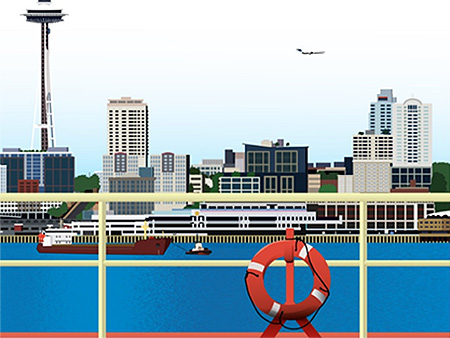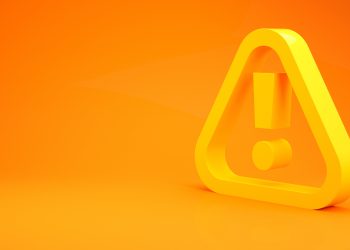William H.Moore, Senior Vice President of Loss Prevention, The American P&I Club presenation during the 2015 GREEN4SEA Forum
United States has very strict guidelines requirements and also enforcement capabilities and they do so with vigour as we all know.
80% of marine environmental pollution comes from land based sources. The most significant part comes from what we call as ‘non-point’ source pollution such as:
- fertilizers, herbicides & pesticides from storm run off and soils from erosion prone areas
- septic tank systems
- airborne contaminants collected by precipitation
- motor vehicles & mechanical equipment
- heavy metal and tar residues from roads, etc.
It is true that ships are considered as easy point source pollution targets for authorities. In the US, criminal prosecutions and civil fines are severe. It is a constant threat to our industry. It is important to consider how this expanded into our industry. We can always argue where it actually started; with Exxon Valdez and with the Oil Pollution Act of 1990. At that point of time, there was a lot of focus on oil pollution from ships. Since that time, we have seen that expansion in all types of areas:
- oil pollution from bunkers & bilges
- garbage, sewage, noxious substances
- invasive species from ballast water
- air pollution— NOx, SOx and CO2
- “holistic” set of pollutant sources
We are in the process of evaluating and trying to keep Members of the American P&I Club informed about how stringent requirements will be enforced. It is very important for us to make sure that we are keeping shipowners aware of what is actually required in the US. USCG takes into serious consideration the environmental matters by doing Port State Control inspections and monitoring quite frequently the deficiencies.
It is worth to mention briefly the history of oily water separator violation as we have seen a great number of cases. First OWS case in USA leading to fines was in 1994. (Holland America Lines). Violations have continued through the years with significant fines and jail eg Columbia Shipmanagement (2013), Pacific International Lines (2013), Marine Managers (2014). We have seen a number of them particularly from P&I perspective looking at certain elements of these cases for reimbursement the members on a case by case basis. It does continue to happen in our industry despite the risks to owners, managers and seafarers.
Shipowners who trade in US are asking for an overview of the environmental regulation for compliance in the US. Therefore, we have produced a guide entitled as ‘’ Welcome to the USA’’ which is focused on the following important issues:
- MARPOL 73/78, Annex I-VI.
- Vessel General Permit (VGP).
- California Air Resource Board (CARB).
- North America Emissions Control Area (ECA).
- Non-Tank Vessel Response Plan.
- Tanker Vessel Response Plan.
- Ballast Water Management
Also, it is worth to mention how crucial role the human element plays for the environmental compliance. Therefore, shipowners; focus should be on management oversight and culture, crew competence, crew selection and constant training. From our perspective, we are spending a lot of time and energy focusing on the concept of training as a relation to environmental compliance and we foresee the following trends and risks:
- MLC 2006 compliance– seafarers with greater leverage.
- ECA requirements stiffening– challenge of meeting demand for low sulphur fuel is concern.
- OWS system violations will continue– “It will never happen to us” is a dangerous position for any owner to take!
- Qualified seafarers– competency is, and will continue to be, a challenge.
- Unilateral environmental & liability in the USA – this trend will continue unabated.
Above article is an edited version of William H. Moore’s presentation during the 2015 GREEN4SEA Forum
You may view his presentation video by clicking here
Click to read ‘’ Welcome to the USA!” guide (updated on March 2015)
| Click here to view all the presentations on this GREEN4SEA Forum |
———————————————————————————————–
About William H.Moore
Senior Vice President of Loss Prevention, The American P&I Club
 Dr. Moore is the Senior Vice President for Loss Prevention at the Shipowners Claims Bureau, Inc., managers of the American Club. In that capacity, he brings 21 years of experience to the development and implementation of the Club’s loss prevention initiatives to assist shipowners in the reduction of maritime risks and incidents. He formerly worked at ABS in New York and Gard Services in Norway. He acquired his doctorate degree at the University of California at Berkeley in Naval Architecture and is also a graduate of Ocean Systems Management at the Massachusetts Institute of Technology. Dr. Moore is also formerly the Chairman of the IMO’s Joint Maritime Safety Committee & Marine Environmental Protection Committee’s working group on the Human Element.
Dr. Moore is the Senior Vice President for Loss Prevention at the Shipowners Claims Bureau, Inc., managers of the American Club. In that capacity, he brings 21 years of experience to the development and implementation of the Club’s loss prevention initiatives to assist shipowners in the reduction of maritime risks and incidents. He formerly worked at ABS in New York and Gard Services in Norway. He acquired his doctorate degree at the University of California at Berkeley in Naval Architecture and is also a graduate of Ocean Systems Management at the Massachusetts Institute of Technology. Dr. Moore is also formerly the Chairman of the IMO’s Joint Maritime Safety Committee & Marine Environmental Protection Committee’s working group on the Human Element.
In the outbreak, I was forthright with you propecia before and after has changed my subsistence. It has become much more fun, and now I have to run. Just as it is improbable to sit.






























































